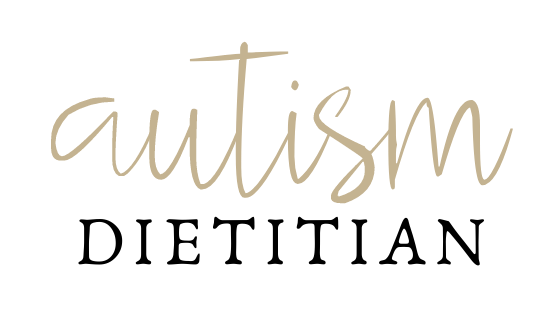The Impact of Artificial Food Dyes on Autism & ADHD
As a dietitian for children with autism and ADHD, I have always been aware of the connection between artificial ingredients, particularly food dyes, and worsening hyperactivity, focus, sleep, and other symptoms. Removing artificial dyes is often one of the first dietary changes I recommend, as it is beneficial for any individual, regardless if they are on the autism spectrum.
WHAT ARE artificial FOOD DYES?
Food dyes are artificial colors added to your food to create bright colors. They’re present in thousands of foods from breakfast cereals to sodas to chewing gums. Not only do artificial dyes have neurotoxic chemicals that aggravate mental health problems, but we also know that artificial food color usually contains petroleum and is manufactured in a chemical process that includes formaldehyde, aniline, hydroxides, and sulfuric acids. Most impurities in the food color are in the form of salts or acids. Sometimes lead, arsenic, and mercury may be present as impurities, which we know can be a major contributor to autism severity. [1]
The most common dyes include:
FD&C Blue No. 1
FD&C Blue No. 2
FD&C Green No. 3
FD&C Red No. 3
FD&C Red No. 40
FD&C Yellow No. 5
FD&C Yellow No. 6
COMMON REACTIONS TO FOOD DYES
The most common reported reactions to artificial dyes include ADHD symptoms, anaphylactic reactions, bedwetting, confusion, ear infections, eczema, mood swings, OCD behaviors, sleep disturbances, aggression, lack of concentration, and hyperactivity. Artificial dyes are the most problematic in our food, but they are also present in beverages, medications, and personal care products.
autism, adhd, and food dyes
The research and speculation that food dyes worsened behaviors in children with autism and ADHD really picked up in 2011 and has continued to climb. A meta-analysis linking autism and food colors was published in early 2020 and had some ground-breaking discoveries. It clearly outlined that food colors Blue 1 and 2, Green 3, Red 3, Yellow 5 and 6, Citrus Red 2, and Red 40 can trigger many behaviors in most kids, specifically hyperactivity. They also found there to be a specific correlation between yellow dye and sleep disturbance. [1]
If you are considering removing artificial dyes from your pantry, I suggest taking a look at the ingredient label for the following:
Breakfast cereals
Snack foods like fruit snacks
Salty snacks
Pickles
Cake mixes
Juices
Flavored beverages and sodas
Medications like antihistamines, antibiotics, antidepressants, and NSAIDs
Personal care products like soaps, shampoos, toothpastes, and lotions
Any pre-packaged foods
HOW DO I AVOID ARTIFICIAL COLORS?
The best way to avoid artificial colors is to buy packaged foods only from reputable health food brands. Many health food stores also ban artificial ingredients from their shelves, such as Whole Foods who has strict quality standards about artificial colors in their foods. In fact, they also ban any products containing artificial preservatives, artificial sweeteners, or hydrogenated fats.
Dyes made from whole food sources are available and have made their way into the market as an alternative for artificial food dyes. These include:
Annatto – a reddish-orange dye made from a South American shrub
Beta-carotene
Betanin – an extract from beets
Carmine, derived from the cochineal insect Paprika
Lycopene from tomatoes
Saffron
Spirulina (from algae) – for gum and candy only.
Avoiding artificial ingredients isn’t great just for your child with autism, it’s great for your whole family!
Looking for Nutrition Guidance & Community?
REFERENCES
[1] Bakthavachalu P, Kannan SM, Qoronfleh MW. Food Color and Autism: A Meta-Analysis. Adv Neurobiol. 2020;24:481-504. [LINK]
[2] What are Artificial Colors? Naturally Savvy Website. Accessed 4 May 2020. [LINK].
